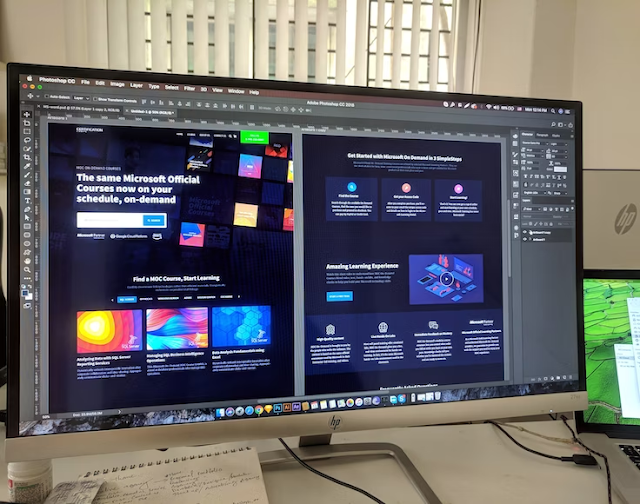The Art of Web Design: Balancing Form, Function, and User Experience
Web design is a fine art that requires a delicate balance between form, function, and user experience. The art of web design is not only about making a website look good but also ensuring that it is functional and user-friendly. A well-designed website not only serves its purpose but also creates a positive impression on the users. It is a blend of creativity, aesthetics, and technical know-how that makes for an effective website. Web design is not just a tool to enhance the visual appeal of a website, but it is the key factor that influences the user’s experience and satisfaction. In today's digital age, where a website acts as the face of an organization, it is imperative to have a website that is not only visually appealing but also easy to navigate and interact with.
The art of web design involves understanding the user's needs and tailoring the website to meet those needs. It requires a deep understanding of the user journey and the ability to create a seamless experience for the user. The form of
1. Design for users, not yourself.
When it comes to designing a successful website, one of the most important principles to keep in mind is to design for users, not yourself. It can be easy as a designer to get caught up in your own preferences and personal style, but ultimately the success of a website depends on how well it serves its intended audience. This means taking the time to understand who your target users are, what their needs and goals are, and what kind of experience they expect from your site. By prioritizing user needs and preferences over your own, you can create a website that is not only visually appealing, but also functional, intuitive, and user-friendly. Ultimately, this will lead to a better user experience, higher engagement, and more conversions, making it a key component of successful web design.
2. Simplicity is key in design.
In the world of web design, it's easy to get carried away with flashy graphics and complex layouts. However, it's important to remember that simplicity is key in design. When it comes to creating a website that is both aesthetically pleasing and user-friendly, simplicity can make a huge difference in the overall user experience. By focusing on clear, concise design elements and avoiding clutter, users are able to navigate the site more easily and find what they are looking for without becoming overwhelmed. In addition, simplicity can also improve the website's loading speed, which is a critical factor in retaining visitors and reducing bounce rates. Therefore, designers should strive to strike a balance between creativity and simplicity to create a website that is visually appealing, easy to navigate, and optimized for performance.
3. Ensure seamless navigation experience.
One of the most important aspects of web design is ensuring a seamless navigation experience for users. When designing a website, it is crucial to consider how users will navigate through the pages and content. Navigation should be intuitive, easy to use, and consistent throughout the website. Users should be able to find what they are looking for quickly and easily, without getting lost or confused. To achieve a seamless navigation experience, web designers should focus on creating clear and concise navigation menus, using descriptive labels and categories, and including search functionality to allow users to quickly find specific content. Additionally, designers should ensure that navigation is optimized for different devices and screen sizes, as users may access the website on various devices. By prioritizing seamless navigation, web designers can create a positive user experience and increase user engagement and satisfaction.
4. Prioritize accessibility for all users.
When it comes to creating a successful web design, it's important to prioritize accessibility for all users. This means designing a website that is easily navigable and usable for people with disabilities, as well as those who may be using assistive technologies. Some ways to achieve this include ensuring that all images have alternative text descriptions, using clear and concise language for all content, and providing keyboard-friendly navigation options. It's also crucial to keep in mind that accessibility is not just about complying with legal requirements; it's about creating an inclusive online experience for everyone. By prioritizing accessibility in your web design, you can ensure that all users are able to access the information and services they need, regardless of their abilities or assistive technologies.
5. Continuously test and improve design.
In the art of web design, it is essential to balance form, function, and user experience to create exceptional websites. One crucial aspect of achieving this balance is continuously testing and improving design. As web design is not a stagnant field, it is critical to keep up with the ongoing changes and trends. Testing different design elements, such as color schemes, font styles, and layouts, can help identify what works well and what needs improvement. Regularly checking website analytics and user feedback can also provide valuable insights into the user experience, allowing for optimization and improvement. By continually testing and improving design, websites can become more efficient, user-friendly, and aesthetically pleasing, ultimately leading to improved engagement and conversions.
Read also: The Vital Role of IT Support in Norfolk's Thriving Business Landscape
Conclusion
In conclusion, web design is an art form that requires a delicate balance between form, function, and user experience. A successful website design not only looks visually appealing but also provides a seamless user experience and fulfills its intended purpose. By keeping these principles in mind, web designers can create effective designs that cater to the needs of both the client and the end-user. With the ever-evolving technology, it is more important than ever to stay up-to-date on new trends and best practices to ensure the success of any web design project.



Comments
Post a Comment